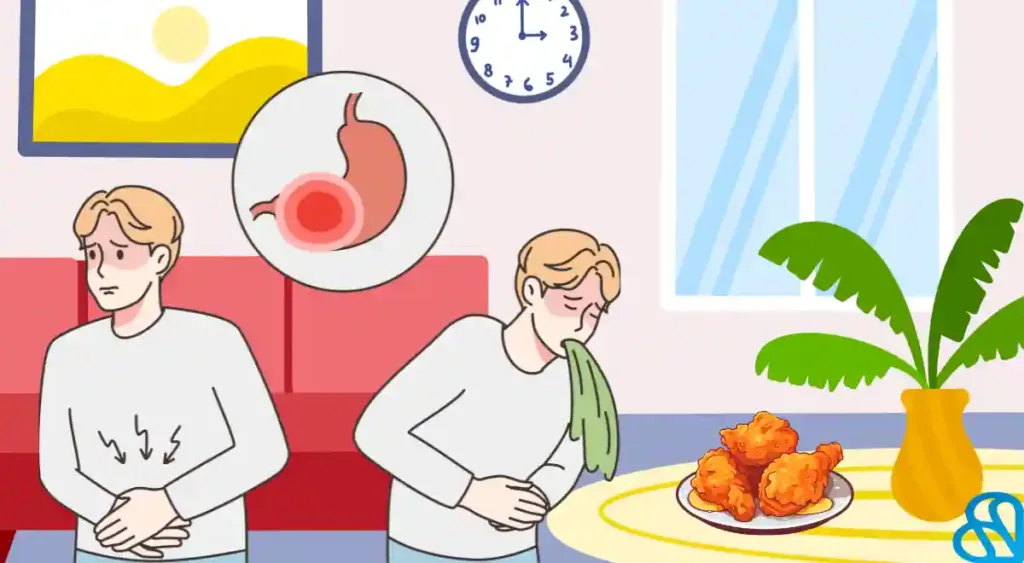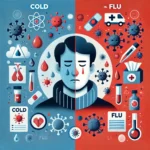Food safety is crucial, especially when handling raw meat like chicken. Knowing the signs of food poisoning from chicken is not just about recognizing illness but also preventing it. Whether you’re an experienced home cook or a kitchen novice, understanding the potential risks and how to mitigate them is paramount. This guide covers the complex issues of chicken-related food poisoning, equipping you with the knowledge to safeguard your health and the health of those you cook for.
Introduction
Every year, millions of people fall ill from foodborne diseases, with chicken often playing a central role in these cases. While no one is immune to food poisoning, awareness of the causes and symptoms is the first step in prevention. This blog is designed to empower you with the knowledge to identify foodborne illnesses linked to chicken and, most importantly, reduce their likelihood.
Understanding Food Poisoning
Food poisoning is a sickness that occurs after consuming contaminated food. The contamination could result from pathogens entering the food during different production, storage, or preparation stages. Symptoms might be moderate to severe, and the onset can be rapid or gradual, depending on the cause.
Brief Overview of Food Poisoning and its Causes
The common culprits behind food poisoning include bacteria, viruses, or parasites. In the case of chicken, bacteria like Salmonella or Campylobacter are primary concerns, as they can be present in the intestines of healthy chickens and can then contaminate the meat during processing.
Common Types of Chicken-Related Food Poisoning
Understanding the types of chicken-related food poisoning is paramount, as different pathogens can result in distinct symptoms and dangers.
– Salmonella
Salmonella is one of the most well-known foodborne pathogens, often associated with poultry products. The bacterium can cause salmonellosis, resulting in fever, diarrhea, and abdominal cramps. Dehydration and hospitalization may result from severe cases.
– Campylobacter
Campylobacter is another significant cause of food poisoning commonly found in undercooked chicken. Symptoms include diarrhea, cramping, abdominal pain, and fever. In severe cases, complications like Guillain-Barré syndrome (a form of paralysis) can occur.
– Clostridium perfringens
This bacterium commonly causes food poisoning and can be found in contaminated meats, including chicken. Symptoms of Clostridium perfringens infection include diarrhea and stomach cramps. They typically develop within 6 to 24 hours after eating contaminated food.
Also Read- Allergy Symptoms – 16 Signs You Should Not Ignore-

Signs of Food Poisoning from Chicken
Signs and Symptoms
Recognizing the signs of food poisoning from chicken is critical for timely intervention and treatment. The common symptoms of food poisoning are:
1. Nausea, Vomiting, Stomach Cramps
An upset stomach accompanied by nausea, vomiting, and abdominal cramps is a common sign of food poisoning. These symptoms can develop within hours of consuming contaminated chicken.
2. Diarrhea
A rise in regularity and looseness of bowel motions is another symptom of food poisoning related to chicken. Severe diarrhea can lead to dehydration, especially in children and older adults.
3. Fever, Headache, Body Aches
In the case of bacterial infections like Salmonella or Campylobacter, additional symptoms such as fever, headache, and body aches may manifest, mimicking those of a flu-like illness.
Also Read- What are Signs of your First Period-Menstrual Health Awareness Month

When to Seek Medical Attention
While many cases of food poisoning resolve independently, sure signs should prompt you to seek medical help.
– Severe Symptoms
If you experience severe vomiting, high fever, bloody stools, or signs of dehydration, it’s crucial to seek immediate medical attention. Your healthcare provider can offer treatments to manage symptoms and complications if present.
– Immunocompromised Individuals
People who have weaker immune systems are more vulnerable to severe foodborne infections. If you fall into this category, it’s essential to be vigilant about food safety and consult a medical expert as soon as you suspect food poisoning.
Prevention and Safe Handling
As with most things, an ounce of prevention is worth a pound of cure.
– Proper Cooking Temperatures
The heat from cooking chicken to an inside temperature of 165°F (74°C) is the industry standard for bacteria killing. Use a food thermometer to be specific, as visual indicators like color are unreliable.
– Cross-Contamination Prevention
Keep chicken and its juices away from ready-to-eat foods to prevent cross-contamination. Wash hands, utensils, and surfaces thoroughly after contacting raw chicken to avoid spreading bacteria.
– Refrigeration and Storage Tips
Refrigerate or freeze chicken promptly after purchase. Keep raw chicken in an airtight container on the lowest shelf to stop its fluids from dripping on other food.
Also Read- Winter Flu Season- 10 Home Remedies for Beating the Flu This Winter
Tips for Home Cooks
Having the correct information and incorporating safe cooking practices can significantly reduce the risk of chicken-related food poisoning.
– Safe Shopping Practices
Choose chicken last at the grocery store to keep it cold. Kindly put it inside a plastic bag to stop leakage and cross-contamination.
– Handling Raw Chicken
Since room temperature can promote the growth of bacteria, thaw frozen chicken in the microwave or refrigerator. Don’t wash raw chicken, which can spread bacteria around your kitchen.
– Cooking and Serving Precautions
Use different chopping boards for raw chicken and other foods, and only partially grill or cook chicken and store it for later use with proper cooling or heating. Serve hot chicken dishes immediately or keep them heated above 140°F (60°C) to prevent bacterial growth.
Also Read- Why Is Soy Sauce So Good? The 10-Health Benefits and Side Effects-
Real-Life Examples
Several outbreaks throughout history have been attributed to chicken-related food poisoning, including the notorious 2019 Salmonella outbreak, affecting over 100 people in the US.
– The 2019 Salmonella Outbreak
This widespread outbreak was linked to various raw chicken products across multiple states, highlighting the importance of consistent safe handling and cooking practices in every home kitchen.
– The 2015 Campylobacter Outbreak
More than 30 people fell ill in the UK due to a Campylobacter outbreak associated with contaminated chicken liver pâté. This incident underscored the significance of cautious consumption, especially with undercooked poultry products.
– The Australian Undercooked Chicken Incident
The case of a family in Australia who experienced food poisoning symptoms after consuming undercooked chicken at a local restaurant serves as a stark reminder that proper cooking is essential, even when dining out.
Safe Chicken Handling Tips
To prevent foodborne illnesses, handling poultry, including chicken, is of utmost importance. Below are some essential tips to ensure safe chicken handling:
1. Washing Hands
It’s essential to wash your hands thoroughly before and after handling raw chicken. It prevents bacteria from spreading to other surfaces or foods.
2. Use of Separate Utensils
It is using separate utensils, such as knives and cutting boards, for raw chicken, cooked foods, or fresh produce. It ensures that cross-contamination between raw and cooked food is avoided.
3. Proper Thawing
You must thaw freezer chicken in the microwave or refrigerator, not at room temperature. Leaving chicken out to thaw can encourage bacterial growth.
4. Avoiding Washing Raw Chicken
Despite common belief, washing raw chicken can spread bacteria around your kitchen. Cooking chicken completely effectively kills any bacteria present.
5. Storage
You should store raw chicken in a sealed container near the refrigerator’s base to prevent juices from contaminating other foods.
Following these recommendations can drastically minimize the risk of foodborne illnesses related to chicken consumption.
Also Read- During Pregnancy- Is Apples Good For A Pregnant Woman?
Conclusion
Understanding the signs of food poisoning from chicken is an essential component of your broader food safety knowledge. By taking a proactive approach to purchasing, handling, and cooking chicken, you can significantly reduce the risk of encountering foodborne illnesses. Remember, food safety is a continuous process that requires vigilance, from the grocery store to the dinner table. Stay informed, and keep these practices at the forefront of your culinary journey. Your health is worth it.
Hi there! I’m content writer and blogger. With over two years of experience, I’ve shared my passion for writing across various platforms. I firmly believe in the transformative power of words and look forward to sharing this journey with you. Enjoy my work!










